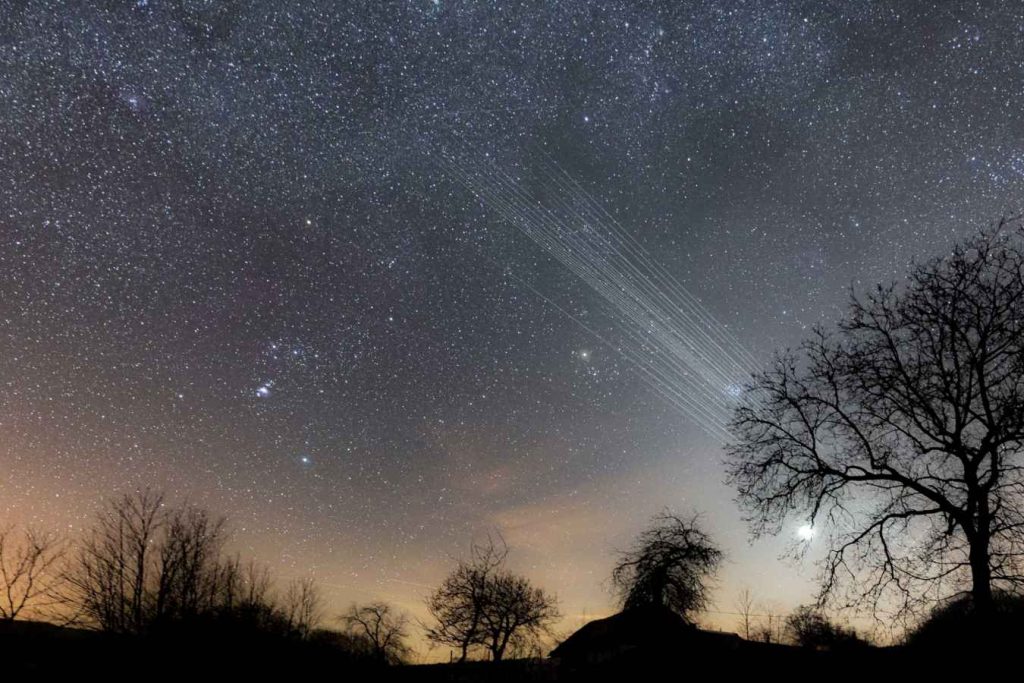Who Owns The Night Sky?
A couple of years ago, an astronomer friend of mine invited the staff of Name a Star to watch a satellite train. Most stargazers have observed satellites, especially the largest satellite, the International Space Station, but what you may ask is a satellite train? Several companies are in the process of launching rocket ships that deploy multiple satellites at once. When the satellites are first released, they streak across the sky in a line before spreading out to their intended orbits.
On the night 2 years ago when I saw my first satellite train, there were 60 satellites chasing each other across the sky. It was a spectacular sight and felt like a major astronomical event. As we watched, my astronomer friend shared with me that scientists and amateur astronomers were worried that these satellites could destroy our beautiful night skies and ruin astronomy. I wondered, who owns the night sky and what is going on with satellite technology?
The satellites that I observed are part of Elon Musk’s SpaceX Starlink program. The purpose of Starlink and other similar programs is to bring internet and connectivity to the globe, especially rural and disadvantaged populations that lack the access that is becoming a critical part of education, health care, and commerce. Unfortunately, as Dr. James Lowenthal, professor and chair of astronomy, Smith College, North Hampton, said on Science Friday “They’re big, and they’re bright”. The satellites show up as bright streaks of light that distort images of far-away galaxies. There’s a wealth of issues in addition to science– the sky traditions of people around the world, cultural practices, and stargazer’s right to enjoy the stars.
How big is this problem? SpaceX plans an initial “constellation” of 1,548 Starlinks, but ultimately it aims to fill out a network with as many as 42,000 satellites. In addition to SpaceX, OneWeb plans to put 6,372 satellites in the sky and Amazon’s Project Kuiper plans for 6,236 satellites. There could be 100,000 of these communications satellites 10 years from now.
Back to who owns the night sky? In the United States the Federal Communications Commission (FCC) regulates communications satellites and all of these organizations are licensed. The American Astronomical Society and the United Nations have recommended that satellite brightness be limited to magnitude 7. These are recommendations, not laws, so apparently no one owns the night sky.
To SpaceX’s credit, they are attempting to address astronomers’ concerns. First, they painted the satellites black, but they overheated. Next, they tried a sunshade, a visor-like appendage (VisorSat) that reduces the sunlight reflected to observers on the ground. This worked and studies have shown that the brightness has been reduced by two-thirds to an average magnitude of 6. SpaceX continues to experiment. For example, the satellites, which are flat, can be adjusted in orbit, so only a knife edge faces earth.
Let’s hope the stars remain visible, so you can name a star for a friend or loved one, who can look up in appreciation.



